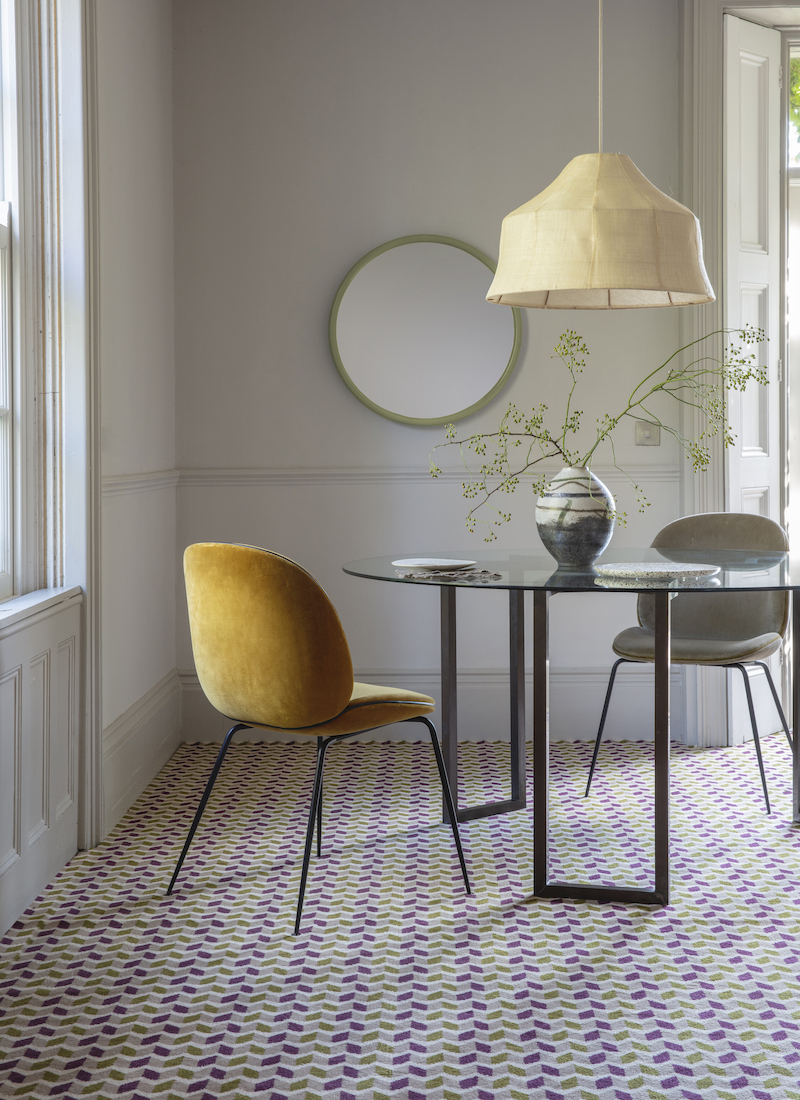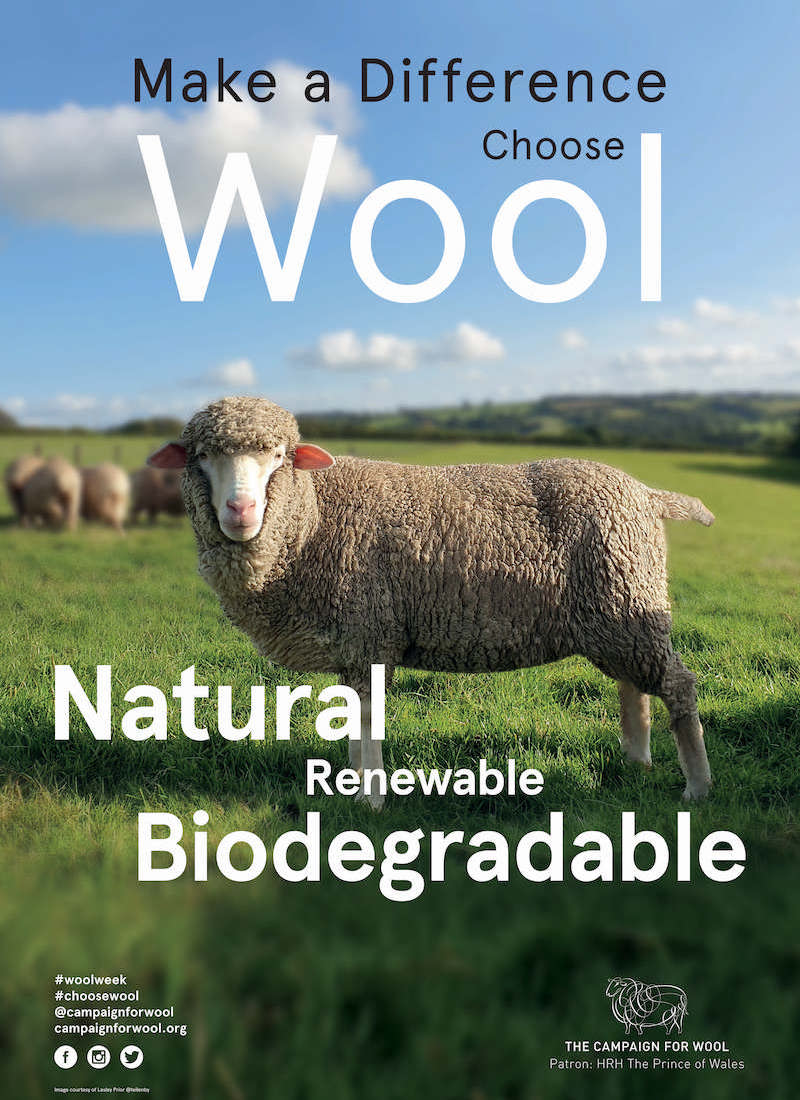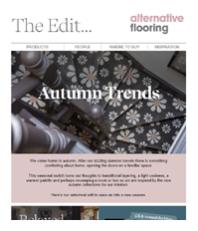

Louisa Knapp, winning student of The Campaign for Wool’s Student Design Competition for the creation of FIBONACCI design for Alternative Flooring carpet and Margo Selby interior fabric.
Louisa Knapp is a final year student at the University of Huddersfield specialising in textiles. She entered and won the Campaign for Wool competition with Alternative Flooring and Margo Selby to design a co-ordinating carpet and cloth that celebrates British design and British making while highlighting the wonders of wool.
The Alternative Flooring and Margo Selby student collaboration competition is part of a programme of projects celebrating the 10th anniversary of the launch of Campaign for Wool – these will all be showcased during Wool Week 2020 (5th–18th October).
Here’s our Q&A with Louisa…
What are you studying?
I am currently studying on the course ‘Textiles Practice’, specialising in Woven Textiles and I have chosen the BSc pathway.
Why did you enter this competition?
I was already a huge admirer of both Alternative Flooring and Margo Selby and had already followed them for many years on social media, so I jumped at the chance to work with them both! Also, I was feeling very creative during lockdown, testing a few design ideas for my final year and thought it would be good practice to put together a professionally produced mini collection. Even if I didn’t win, I saw it as good practice for my portfolio.
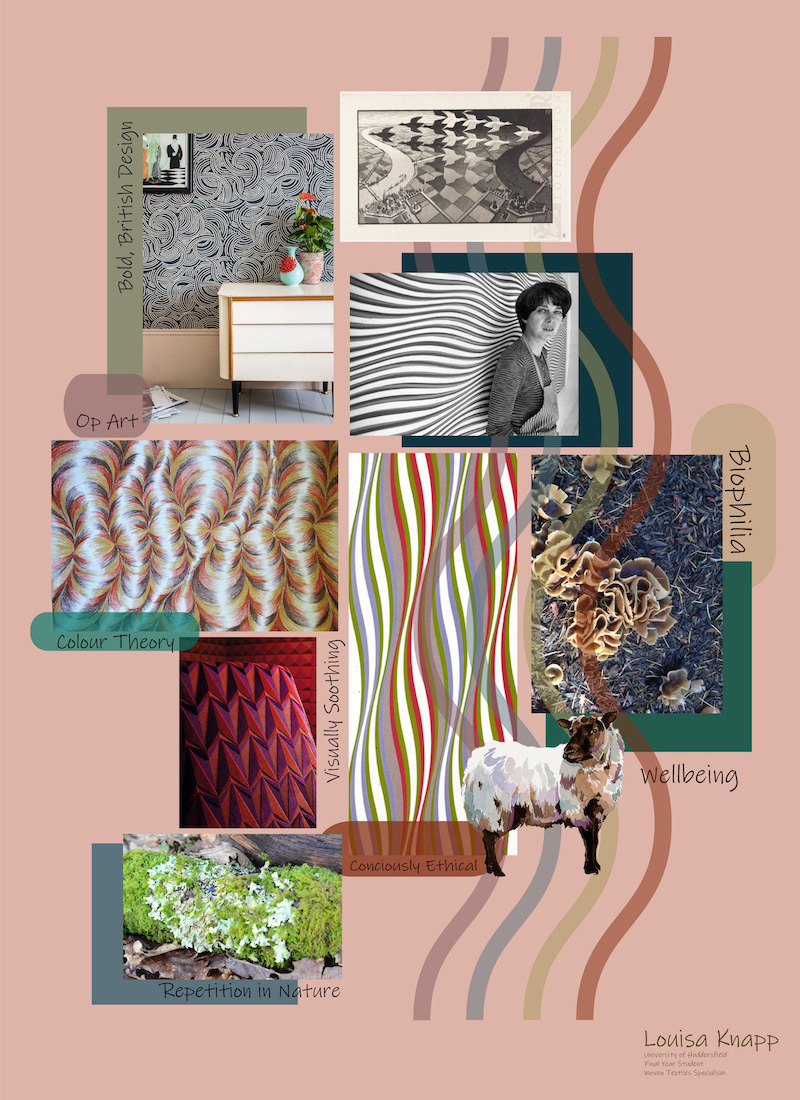

Louisa’s Mood Board
What was the brief?
The initial brief was to design, for Campaign for Wool’s 10-year celebration, a coordinating carpet and fabric which would be produced in wool. It aimed to stress the importance of advocating the wool industry, but hardest of all was to consider a design that would embrace the Campaign for Wool, Alternative Flooring and Margo Selby brands equally.
Describe your creative process.
I often find myself sketching out a design or pattern that I think I’ve noticed out walking/ on the commute/ whilst at a gallery, or (don’t think me mad) but that I have dreamed about. A design often manifests after I have let an idea brew in my head, not letting it out until I feel it has potential.
I do a lot of painting and drawing at University and we are encouraged to complete traditional gouache painted designs which I prize as much as my digital ones. Drawing is so personal and unique that it’s through this process that I get some of my most innovative ideas, patterns and concepts.
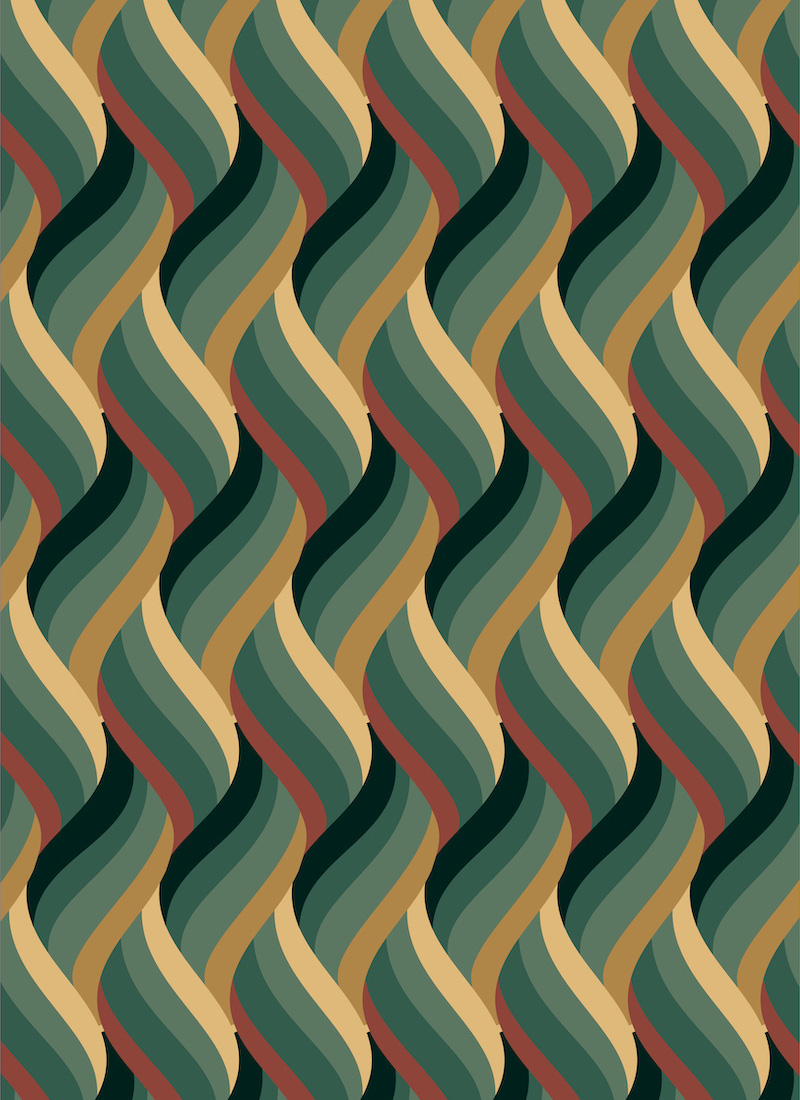

Fibonacci CAD design
Then it is all about material experimentation. Here in Yorkshire, I am surrounded by textile mills that are always happy to help out or advise a textile student. To name a few: Gardiner Yarns here in Huddersfield, Fairfield Yarns near Rochdale and Knoll yarns in Ilkley.
And despite all my planning and preparation, even the most well thought through ideas continue to evolve once you are on the loom. You find yourself noticing something that wasn’t there in the initial design or even accidentally changing the shafts may lead to further experimentation. Such tangents you just could not have predicted off-loom or digitally.
And your inspirations?
I take a lot of inspiration from the natural world. When I was younger, my parents would often take me and my siblings to National Trust sites and gardens. Then, we dragged our feet, complained about the distance and chanted, ‘Are we there yet?’. As a family, we still do these walks (minus the complaints) and I have grown to appreciate the beauty and variety nature has to offer.
We also have family ties to Cumbria and spend most summers there. The ethereal landscapes around the lakes always takes my breath away. It was in visiting the agricultural shows where I first learnt about wool and Herwick Sheep. It was here too, that I discovered Woolfest.
I’m also a sucker for a gallery day and I try to fit them in regularly with my friends and family. Modern Art as well as historical museums are often what sparks an idea as well as keeping my practice current. The V&A is my go-to venue and has had some extraordinary exhibitions over the years but the Wellcome Collection, tucked away in Euston, is a treasure trove for science and art lovers alike.
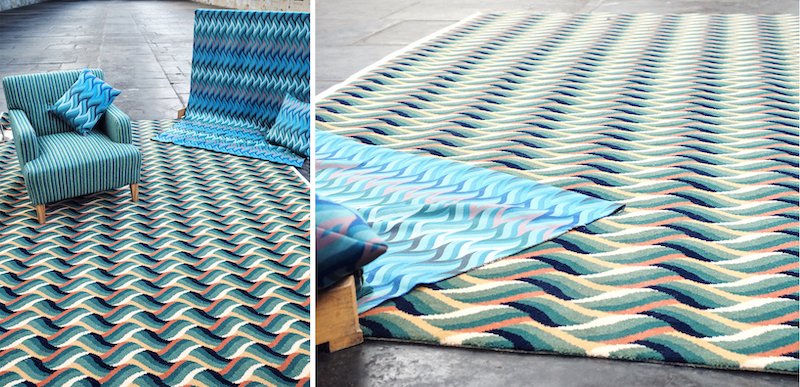

Fibonacci by Louisa Knapp, limited production carpet for Alternative Flooring and woven fabric for Margo Selby – winner of the Student Design Competition by The Campaign for Wool.
Was it easy to coordinate cloth and carpet?
Out of the two designs entered for the competition, both cloth and carpet teams chose Fibonacci as their stand out favourite, so it was challenging to make them appear ‘coordinating’ whilst being the same design.
I overcame this through consideration of scale and chose a more calming colour palette for the upholstery fabric that you would surround yourself with.
For the carpet, I decided on a more stimulating, bold colour combination. In this way, both designs could be accommodated in situ.


Technical card for Fibonacci design shown both as carpet and textile, produced by Louisa Knapp.
What does wool mean to you?
In my view, wool means a sustainable and fruitful future career. Wool is, and has always been, a wonder fibre. From soft and delicate to robust and heavy-weight, wool has the properties to deliver across a range of finishes and applications. It is a long-term and sustainable solution to both environmental and commercial demands for the renewable, ‘greener’ world we want for future generations.
Is British design and making important to you?
Yes! Britain is already totally steeped in textile heritage. From the lace history in Nottingham, the silk mills of Sudbury to the worsted suiting cloth of Huddersfield. Whether mill made or hand crafted, it is important to keep these industries alive to educate future designers on British craft of the past and to develop a vision for what comes next.
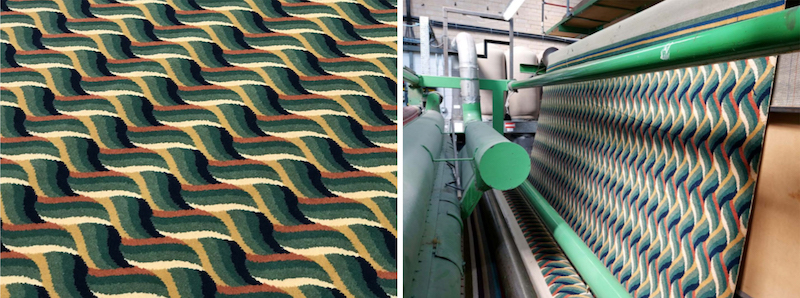

Making the axminster carpet – Fibonacci by Louisa Knapp for Alternative Flooring
I feel it is important here to highlight the importance of crafting. Most of us live in quite a disconnected world. The traditions of crafting are ways in which we can address that. Making cloth from fibre is an amazing act of metamorphosis. It is a skill that I believe to be a thing of pure joy and one that meets the need of the modern psyche to be reacquainted with the world and its natural resources. A crafted item is so much more than its constituent parts.
How did Lockdown influence you?
Lock down turned out to be a very creative time for me; I tried several new skills and crafts (including the at home trends for baking banana bread and whipped coffee!). Lock down allowed me an extended and reflective time at home. It was a continuous time that is rare, and I had time for thinking in depth that during full time education I would never have had time for! I found myself reflecting on the sort of designer I wanted to become, the work I wanted to produce and the effect I wanted to have on the world around me. Coinciding with summer, I was so grateful to be at home with my parents and their wonderful garden and wander about and look to nature for a respite which turned out to be the main inspiration for ‘Stay at Home’.
What did winning mean to you?
I feel so privileged to have been chosen.
I feel a great responsibility in representing my University. There is so much pressure to study design in London but every year I am so grateful that I chose Huddersfield to study for my degree. When interviewing for internships and graduate jobs, students from Huddersfield University are well known for producing outstanding students with high levels of skill, work ethic and innovation.
In winning this competition, I am incredibly proud to be in a position of championing the beauty and diversity of wool. To have the potential to inspire an audience of young designers as well as established industry professionals, to consider the potential of this most versatile of materials.
Alternative Flooring’s, Quirky B Margo Selby Ribbon Magenta carpet, a great example of a successful creative collaboration
What do you like about Alternative?
The way in which Alternative Flooring endorses the designer behind the designs is so refreshing to see. Such a successful and commercial manufacturer that supports creative talent is an aspect of their practice that is to be applauded. Increasingly, people want to know product credentials, the where’s and how’s of production. They have this transparency and have made it a selling point for customers and collaborators looking for a forward looking, reputable company.
Same question regarding Margo Selby…
With her debut at Collect 2020, I feel that Margo got the craftmanship recognition that she deserves after years of demonstrating the importance of materials, design and artistry that goes into successful woven textiles. This is an achievement of hers that I greatly admire and aspire to be central in my own work.
The opportunity to work alongside Margo on a professional standpoint has been a wild learning curve and a truly rewarding experience. What I have liked most about Margo is her generosity. Margo is well known in Universities for taking interns under her wing.
She shows such kindness and encouragement to undergraduates, including myself. In fact, Margo has also offered the chance to be mentored by her through this, my final year. This is something that I am absolutely thrilled about!
Any design mentors?
I have had the opportunity to work with so many inspirational women throughout my educational journey. I would like to use this platform to say a huge thank you so much to each of the teachers who have spurred me on, nurtured and inspired my creativity throughout the years. To name a few: Mrs Britch, Cynthia, Lizzy and Emily, the Nicola’s, Aleksandra, the fierce team at Botany and of course Margo and Lorna. Coming from such a big family I hate to choose just one, but I have to give a shout out to my mother. My number one fan, my rock, my idol.
Describe your style in three words.
Classic, Organic, Technical.
Future Plans?
After the experiences gained through my placement year, I would aim to earn my stripes at a textile mill. I loved the balance of design work mixed with the physical ability to get on the loom to trial samples for texture and colour. I don’t think I’d be happy doing one without the other.
The ultimate dream would be to own my own flock, weaving with their wool and running my own creative enterprise. All the graduates I have spoken to, have told me to make sure I stay creative once I finish university. I think in these uncertain times that is sound advice because it will keep all options open. In the near future, the plan is to invest in a loom and keep on weaving and developing my own designs.
Who knows what the lasting effects of Covid-19 will be for the class of 2021, but for now I am just taking it one day at a time, one design at a time and keeping my eye out for opportunities to thrive up here in the North!
More about The Campaign for Wool Student Design Competition Wool Week 2020
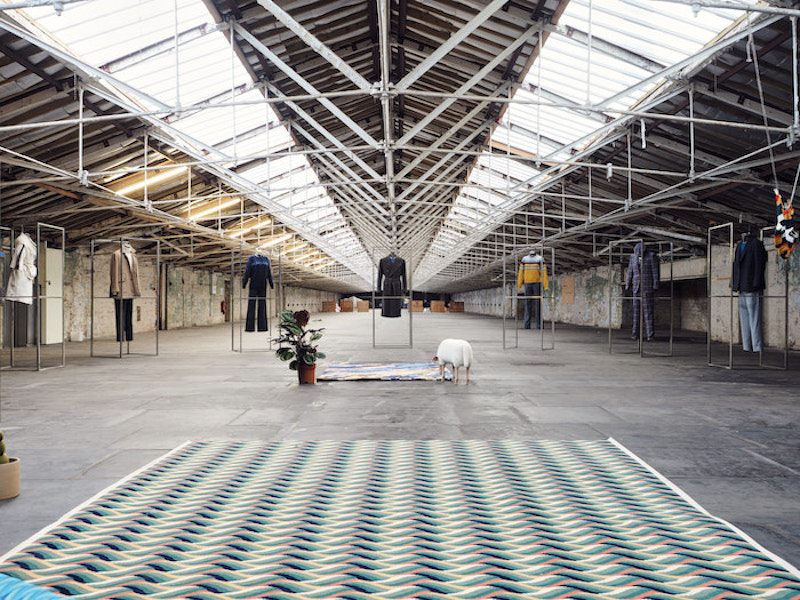

The Campaign for Wool’s Student Design Competition finalists as seen exhibited at Salts Mills.
Students from universities across the UK took part in the competition, pioneered by the His Royal Highness The Prince of Wales’ Campaign for Wool, after realising that the use of wool was not commonly taught in many syllabuses. This versatile, sustainable and renewable fibre offered a new challenge to students – who were linked up with a relevant brand across the knitwear, tailoring or interiors sectors to create items.
Nicholas Coleridge CBE, Chairman of The Campaign for Wool said: “This student design competition is one of my favourite Campaign for Wool initiatives. Firstly, it introduces the unique properties of wool as a fibre to student textile designers, sometimes for the very first time. And, having encountered wool, it often becomes a design habit. Secondly, students are introduced to top wool-using brands, and get a sense of how they operate and what they are like on the inside. Several students in past years’ competitions have ended up working for these brands, so it has been a happy result for all. Thirdly and finally, the competition is yet another way of reminding us all that wool, ahead of all alternatives, is the most versatile, natural and most ecologically friendly. The primacy of wool should be taught in every school, as well as at every fashion and textile college. We are so grateful to the brands for inviting the students into their businesses – carpet and rug designers, as well as fashion houses – and we applaud the students too for giving fleece a chance.”
For more information about the Campaign for Wool visit: www.campaignforwool.org @campaignforwool#ChooseWool #WoolWeek #MakeADifference
Web Page:
Virtual 360 Degree Image / Tour It is best viewed on desk top/lap top, and can take a few seconds to load. (Now Deleted)
See Alternative’s Wool Patterned Carpet collection here
See more of our designs and explore our collections here
Follow us on Instagram for inspiration.
Find more flooring and interior design inspiration on our Alternative blog.
